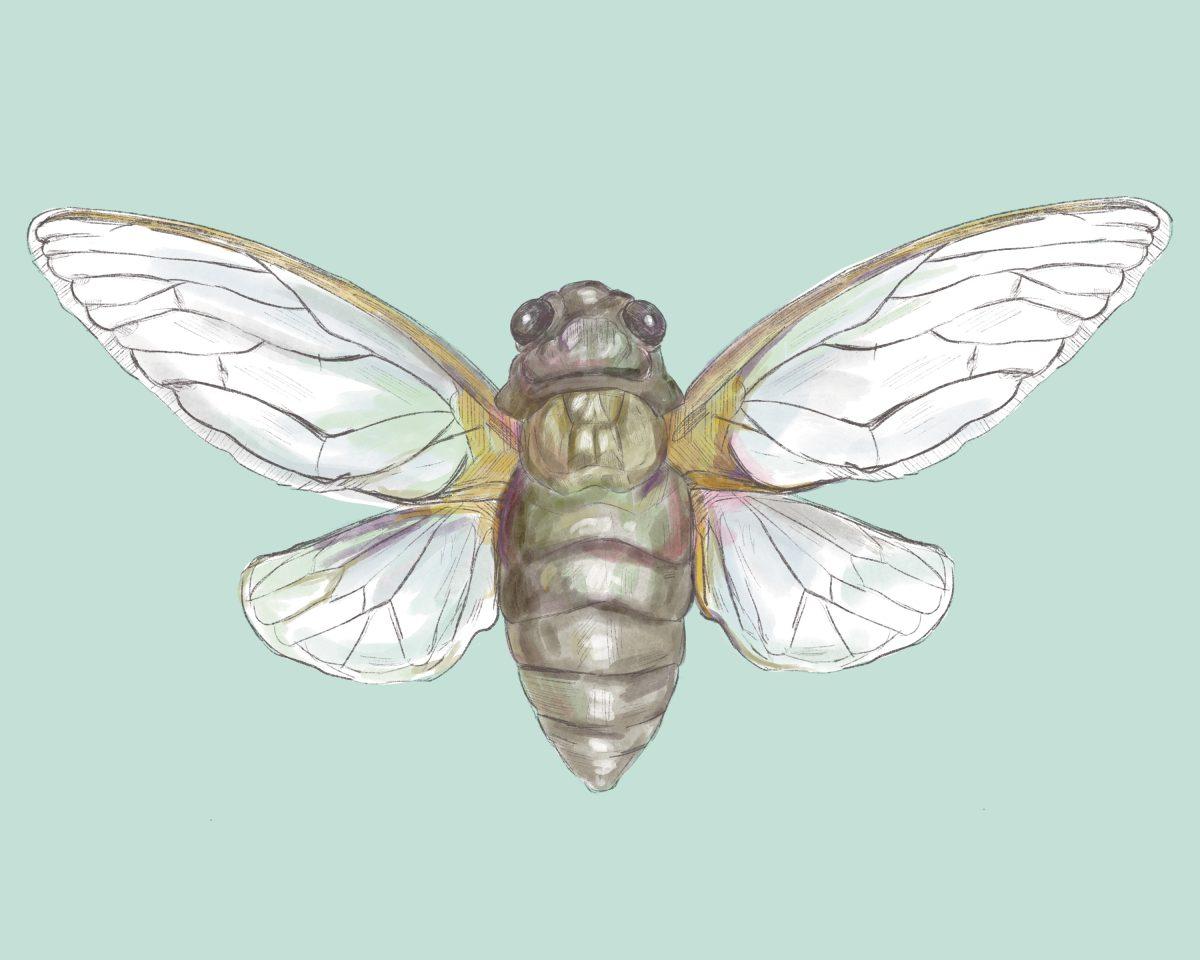A cicada’s iconic song is a sign of summer’s arrival to Raleigh residents. But this year’s cicadas plan to arrive earlier than usual: A different brood of cicadas will emerge in May just ahead of June’s annual cicadas for the first time in 13 years.
Periodical cicadas have longer lifespans than the yearly dog-day cicadas familiar to North Carolina residents. Periodical cicada broods are unique since a brood emerges all at once every 13 or 17 years.
In some places in the U.S., like Illinois, 2024 marks the emergence of both 13- and 17-year cicada broods for the first time in 221 years.
Clyde Sorenson, a distinguished alumni association undergraduate professor of entomology, said this is important even if Raleigh residents will miss it.
“The last time both these broods emerged simultaneously, Thomas Jefferson was the president in 1803,” Sorenson said. “So it is a big deal, even though we’re not going to see any of the 17-year brood.”
Allen Sanberg, emeritus professor of biology specializing in cicada taxonomy at Barry University, said areas with 13- and 17-year broods will see a cicada surplus.
“They still come out in very large numbers, up to 3 million an acre,” Sanberg said. “In normal old-growth forest areas, it’s often difficult to find a spot on a tree that doesn’t have one of the sheds.”
Sorenson said even if North Carolina won’t see both broods, Raleigh residents should still expect to see plenty of cicadas.
“In a lot of the suburban areas around north and west Raleigh, extending over toward Chapel Hill, Orange County and Chatham County, there are going to be places where there are quite literally millions per acre,” Sorenson said. “And they’re going to all come up more or less simultaneously, within a matter of a week or so.”
The high volume of cicadas will inevitably affect the environment. Sanberg said cicadas only impact young trees or woody plants, which may need netting to protect them from cicadas laying eggs.
“Trees respond by what’s called flagging; they’ll actually break off the end of the branch where the eggs were laid,” Sanberg said. “And if this happens too much on a small tree, it can cause some problems for the tree.”
Matt Bertone, professor of entomology and director at the NC State Plant Disease and Insect Clinic, said cicadas can have a positive environmental impact.
“A lot of animals feed on cicadas, so it could be really important,” Bertone said. “And even the dead bodies and things like that are said to help bring nutrients back to the ground, and when they decay, they can actually help plants get more nutrients and whatnot.”
Bertone said cicadas don’t threaten the environment or humans, but humans do threaten them. He said each brood of periodical cicadas stay in a very specific range, which makes habitat loss via development a risk for them.
“As soon as you get rid of the trees, there’s no food for the cicadas,” Bertone said. “If you tear up the ground around there, they can kill cicadas. If you pave over it, then nothing can get up out of there.”
Sorenson said he urges students to see cicadas for themselves.
“They’ve got those orange wings and that black body, but they also have ruby-red eyes,” Sorenson said. ”So they’re really very attractive animals, and they’ve got really interesting behavior. They’ve got an insane, incredible song, especially when there’s 500,000 of them singing all at the same time. I would encourage students to go and find them because they can’t hurt you, and it’s really pretty magical to see them in these big numbers.”
Bertone said apart from next year’s brood farther east, it’ll be 2031 or 2034 before North Carolina sees another large emergence.
Bertone also said this event isn’t just unique for North Carolina but for the entire U.S.
“Even though they could be a nuisance for a little while, they are kind of a world-renowned spectacle for our area,” Bertone said. “Really, these major periodical cicada emergences are only found in eastern North America of this genus of cicada.”
Sanberg said people should focus on enjoying the cicadas.
“This is an evolutionary marvel that evolved these long life cycles over time, and then keeps the synchrony,” Sanberg said. “It is truly an amazing feat of evolution. And again, it’s something that you won’t see again for 13 or 17 years in any particular area. So they only come along every now and then. So enjoy the show.”












